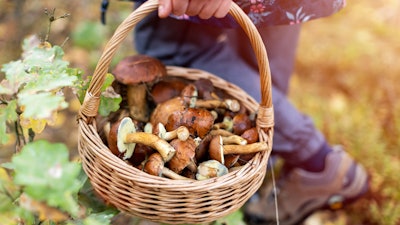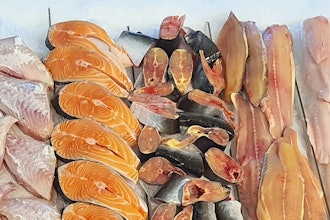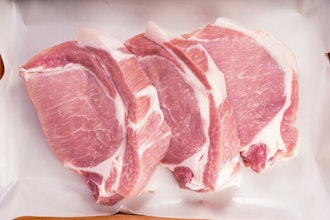
Forget the plastic-wrapped produce wilting under fluorescent lights at your neighborhood supermarket. Wild foods, once the domain of hermits and survivalists, are all the rage today. Foraging for ingredients in nature's pantry has captured the imaginations of a new generation of restaurant chefs and home cooks. From city parks to the woods, they're finding free ingredients and unique culinary experiences. Discover how you, too, can feast on nature's secret bounty.
Some of the world's best restaurants rely on wild foods
Whether it's a deep-seated ancestral hunter-gatherer instinct, the health and economic benefits of eating wild foods or simply the dopamine rush you get from finding hidden treasures, foraging is deeply satisfying for anyone who loves food. These days, you'll even find chefs at high-end restaurants looking to the woods for unique ingredients.
"When I was a pastry chef at Chez Panisse in Berkeley, my early morning shifts often started with scruffy pickers showing up at the side door with their finds, hoping to make a sale," says Anthony Tassinello, a San Francisco Bay Area chef, forager, and author of The Essential Wood Fired Pizza Cookbook. "Coming from suburban New Jersey, I never saw such a marvelous array of fungi - or characters! I became obsessed with figuring out how these treasures made it from the forest to your plate."
At Miyamaso, a two-Michelin-starred restaurant in the mountains north of Kyoto, Japan, owner Histao Nakahigashi forages daily. In the spring, his menu features wild grasses like "fukinoto," while summer brings delicately flavored sweetfish from the river, autumn delivers meaty matsutake mushrooms and bittersweet ginkgo nuts and in winter, flavorful wild game abounds. Diners at Miyamaso get to connect with nature through beautiful mountain views and locally sourced food. As one reviewer said, "Each dish feels like a gift."
Chef Justin Cournoyer's "soil butter" has caught the attention of many for its innovation. In a process that takes hours, Chef Cournoyer sanitizes, steeps and dehydrates soil, which he then infuses into butter. He serves his soil butter with seasonal vegetables for a fancy dish made from dirt. Chef Cournoyer shows that even the most unlikely edible element of nature has a place on your plates.
"As a chef devoted to seasonality and organic practices, foraging is a no-brainer," says Tassinello. "It brings together physical activity, experiencing the wonders of nature and eating really well."
Foraging is good for your health and your wallet
Those wild mushrooms Tassinello finds in the woods sell for upwards of $20 a pound in the market. Dungeness crab, a popular forageable up and down the West Coast, sells for $15 to $20 each. The prospect of enjoying these delicacies for free is enough to get many a hungry foodie to lace up their hiking boots and head out.
Aside from the extra exercise you'll get searching for tasty morsels, foraging can also add extra nutrients to your diet. According to a study by the Public Library of Science Journal, wild greens are highly nutritious, delivering more iron, calcium, protein and fiber than those sold in your neighborhood supermarket.
How to start foraging
If you're ready to jump in and start foraging, start by researching the wild foods available in your area. Here are some practical tips for beginning foragers.
It's all about location and season
Locale and seasonality are important in foraging as you'll find completely different wild foods in one location versus another and what's available will depend on the time of year, too. With a wide variety of options at your disposal, you can sync your everyday cooking with the seasons, and level up your kitchen endeavors.
Search in the highlands in the spring and early summer if you want blueberries, and in the fall if you're craving cranberries. Pacific Northwest oysters are most desirable from late winter to early spring. Throughout the spring, meadows bloom with edible wildflowers and the woodlands deliver wild garlic and rosehips. From March to October, you'll find edible seaweed in most coastal areas. The list, of course, is endless.
"Wild huckleberries are a delight. They complement wild game, add a fresh touch to desserts and shine in specialty cocktails," Tassinello says. "And springtime morels pair perfectly with all spring produce from fava beans to sweet peas, artichokes and asparagus."
Add foraged wild ramps to your Bombay toast, or swap that overpriced lettuce from the grocery store for some chickweed to make Vietnamese salad rolls. Get creative with a basic onigiri recipe and tuck in some grilled wild mushrooms. You'll be in awe of what you can find - and feast on - just by looking around you.
Learn to identify both the delicious and the deadly
Not everything nature offers is edible, so start by learning what dangerous plants grow in your area. Incorrect identification can lead to severe consequences. Poison ivy, deathcap mushrooms, nightshade and water hemlock are just a few common poisonous plants to keep an eye out for. Look for a local foraging workshop or group to learn and meet other foragers.
"We run foraging walks called ‘Can I eat this or will it kill me?' because that's the biggest question new foragers have," says Laura Sampson, owner of Palmer Folk School in Palmer, Alaska. The walks are led by master foragers who cover "what edible ingredients are available in the area and also what not to eat, which is even more important to know in the wild."
Once you know what to avoid, start with a few easy-to-recognize foods. Wildflowers like dandelions and salsify, morels or oyster mushrooms and weeds like lamb's quarters are easy to spot and great additions to your dishes.
Adopt a caretaking mentality
Some critics point to environmental damage as an argument against foraging, but there are ways to forage that are sustainable and supportive rather than damaging the ecosystem.
"We are not separate from nature as a species," Tassinello says. "One could argue that more damage is done by ranching, the timber industry and weekend warriors loving the woods to death."
A good rule of thumb is to take only what you need and leave enough for others to enjoy and also to allow for regrowth and replenishment. After all, once you've found a treasure trove of a certain ingredient, you want to preserve it as a reliable source. As a forager, you enjoy the benefit of nature's gifts, and in exchange, you have a responsibility to take care of its resources, too.
Time to get digging
Once you begin foraging, you'll never see nature the same way again. Suddenly, the woods, meadows and beaches are an abundant larder of delicious morsels just waiting to star in your next meal. Now that you know the basics of how to forage, what's stopping you from grabbing a basket and heading out to find something delicious to eat?
Robin Donovan is the author of more than 40 cookbooks, including the bestselling Campfire Cuisine, Ramen Obsession, and Ramen for Beginners. A food writer, recipe developer, and food photographer, she is the creator of the food blog All Ways Delicious, where she shares easy recipes for the best dishes from around the world.






















